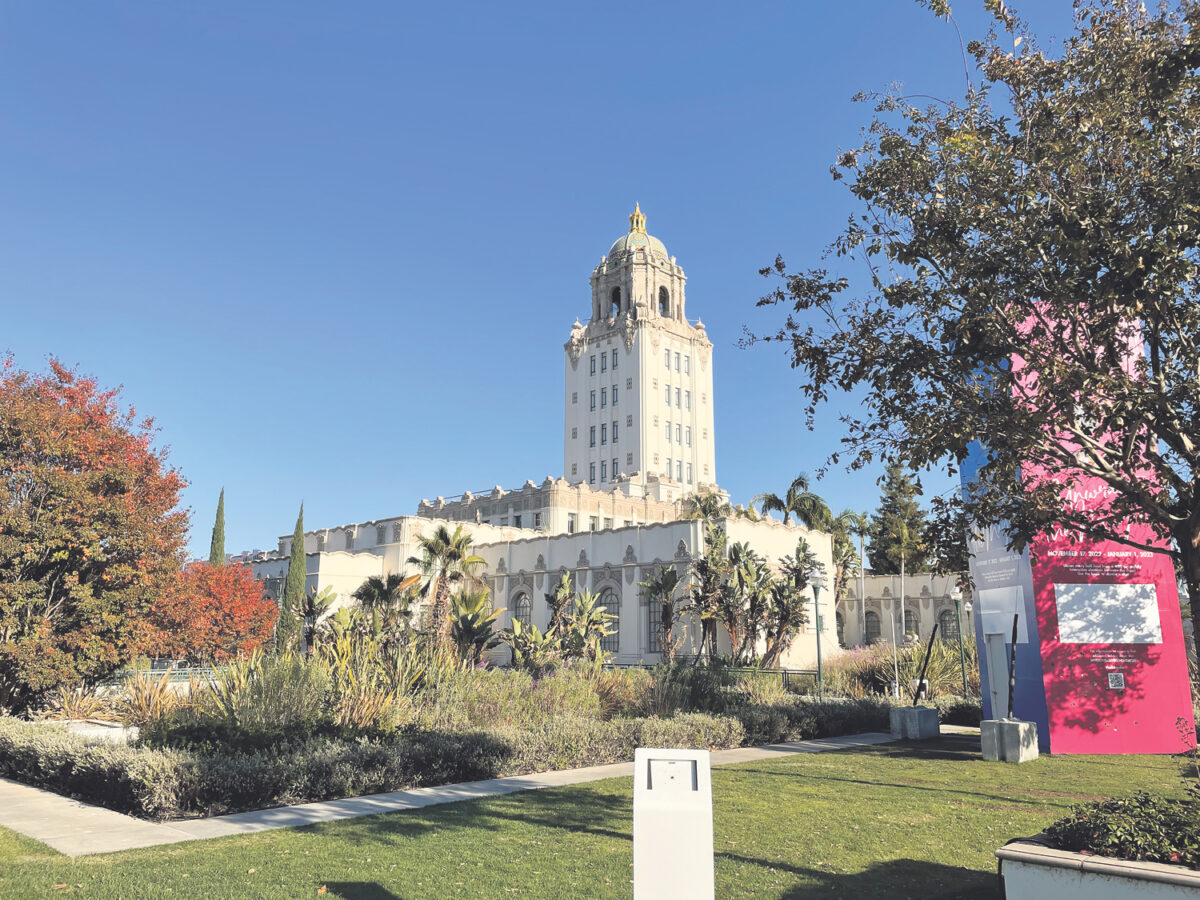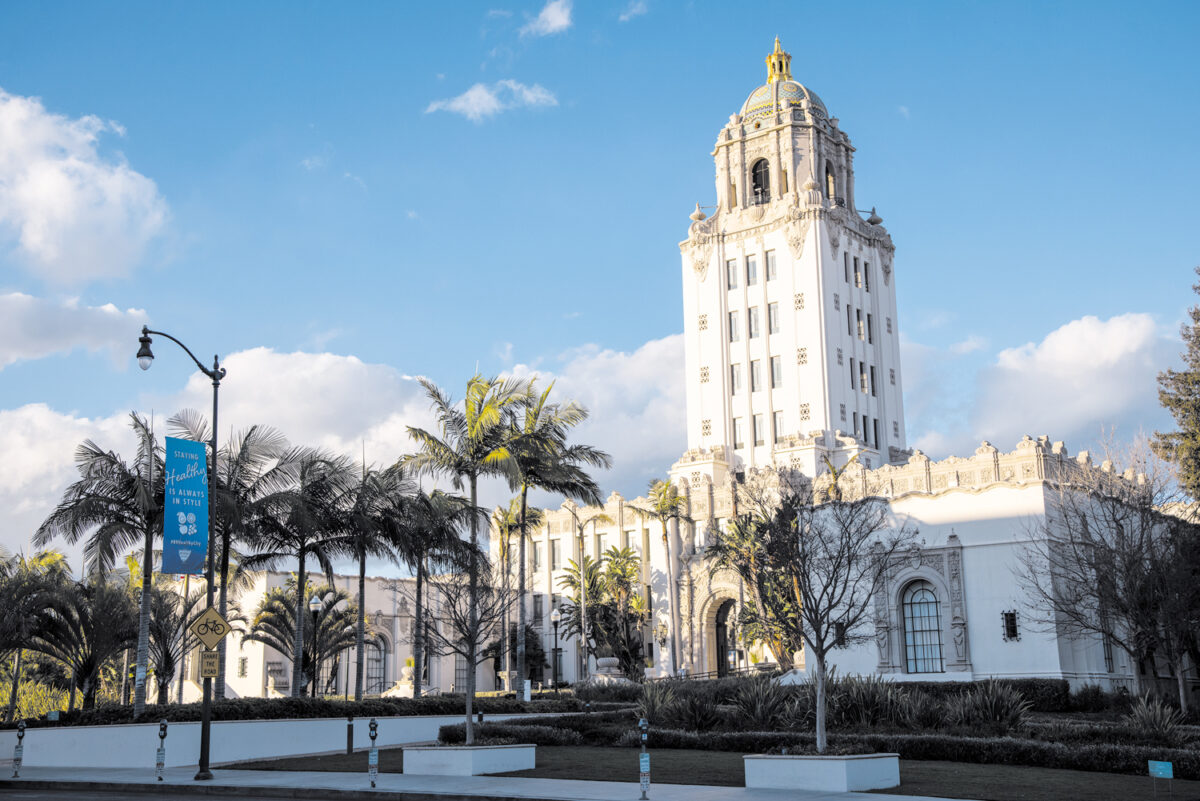On Oct. 20 real estate developer Leo Pustilnikov filed with the city of Beverly Hills plans to build a 16-story, 200-unit apartment tower on the 100 block of Linden Drive.
The project defies city zoning law to say nothing of Beverly Hills’ careful development approval process.
But Pustilnikov might pull the development off thanks to a provision in state law known as the builder’s remedy. Already in Santa Monica, developers want to push through 12 separate projects totaling just under 4,000 housing units by trotting out the builder’s remedy.
What is the builder’s remedy? How will it affect Beverly Hills? Here is what we know.
The Builder’s Remedy
Back in 1990 the state legislature passed and Gov. George Deukmejian signed the Housing Accountability Act. A San Francisco Chronicle story from the time declared the legislation “powerful” and “designed to bludgeon exclusive suburban communities into accepting low-income housing projects.”
The builder’s remedy is part of that law. It says that cities who are not in compliance with their state-mandated Housing Element cannot reject housing developments if the proposed development contains at least 20% of units set aside for affordable housing or 100% of units reserved for moderate-income housing.
In 2019, the builder’s remedy law was strengthened to specify that the relevant non-compliance date is when the development was submitted. Beverly Hills was noncompliant when Pustilnikov submitted his project, and remains not compliant. Pustilnikov would appear to meet the state’s affordable housing requirement by setting aside 40 units as non-market rate.
Never before has a developer used the builder’s remedy to build a project in Beverly Hills. In fact, the builder’s remedy has never been carried anywhere in the law’s 32-year-history, according to Christopher Elmendorf, a professor at UC Davis, who has extensively studied the law.
But the builder’s remedy is relevant because another part of California housing law – the Housing Element – is now important.
The Housing Element
Every eight years California cities submit to the state’s Housing and Community Development their Housing Element, an overarching document that describes the municipalities’ housing stock, zoning and planning laws, and if they meet resident’s needs.
Cities traditionally treat the report as a “paper-pushing exercise,” Elmendorf said.
“No one really cared,” Elmendorf told the Courier. “But the legislature strengthened the law in several important ways starting in 2017, and the governor and attorney general have said they mean it and will enforce it. So, it’s gone from a sleeper to a really big deal.”
The most important way is sharply escalating requirements under the state’s Regional Housing Needs Assessment, or RHNA. In the Beverly Hills Housing Element from 2013 to 2021, the city was required to build three affordable units under RHNA.
For 2021 to 2029, the requirement soars from three dwellings to 3,104 set aside for affordable housing, including 1,008 units for tenants of very low income.
The city at first tried to fight this state edict. Planning officials did go forward with submitting a Housing Element in October 2021 for the next eight years. But in January, the state sent a letter to Ryan Gohlich, community development manager of Beverly Hills, stating, “Revisions are necessary to fully comply with the state Housing Element law.”
The city then spent nine months revising the document including bringing it before the Planning Commission and City Council, before resubmittal on Sept. 29, according to state officials.
“City staff revised the Housing Element based on feedback from the state,” City Planner Timmi Tway told the Courier. “The main areas changed in the Housing Element were the RHNA sites inventory and the affirmatively furthering fair housing section.”
The almost 500-page revised document provides 5,833 sites that could be used to meet the RHNA requirement, a mélange that includes accessory dwelling units on the 77% of the city zoned for single-family housing and potential multifamily buildings in a “mixed-use overlay zone” created mostly in the city’s downtown.
State findings on the revised plan are expected by Monday, Nov. 28.
As of Nov. 22, there has not been a response, meaning Beverly Hills developers may yet propose high-rises that hit the builder’s remedy affordable unit requirement.
Beverly Hills’ Remedy
Pustilnikov, who has proposed a similarly ambitious builders’ remedy development in Redondo Beach, did not return messages for comment through his company 9300 Wilshire LLC.
According to Tway, the project “will be processed in accordance with the city’s existing entitlement process and in compliance with state law.”
Unlike Santa Monica, Beverly Hills has not been doused with builder’s remedy projects. Tway confirmed that the Linden Drive project is the only one in the queue. And even if they were, the city has avenues to challenge a project besides voting it down in a commission or City Council meeting.
Elmendorf has pointed out that the builder’s remedy does not per se give projects an exception from environmental review. That means that using the California Environmental Quality Act could be attempted by city attorneys.
Similarly, a city is allowed to make an argument under the Housing Accountability Act that a builder’s remedy project harms the health and safety of the surrounding community.
Zooming out, though, challenges to individual projects cannot overcome a state stipulation to build thousands of affordable housing units within the next decade for a city whose population has hovered around 33,000 for decades with median home prices more than five times the rest of Southern California.
At a Planning Commission in August, which discussed the revised Housing Element, commissioners characterized Beverly Hills as a place somehow outside Southern California’s affordable housing problems.
“I would stress that it’s not our fault there’s a housing shortage,” said Peter Ostroff. “We are not guilty of that.”
But Ostroff and other commissioners appeared willing to accept the challenge ahead – stating that Beverly Hills would come up with the best regional affordable housing plan. “I can’t cite anything for this,” Ostroff added. “But I am confident that it is true.”






